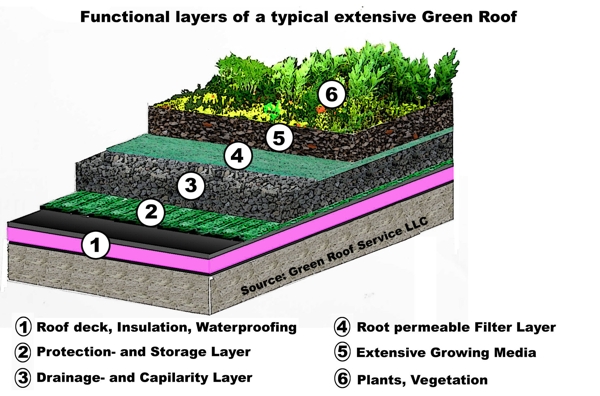Green Roofs
You may have noticed that we’re quite keen on environmentally-friendly and sustainable gardening, so it was probably only a matter of time before we considered green roofs. Once considered a wild and wacky idea used only for new builds that prided themselves on their environmental credentials, green roofs have become part of the horticultural ‘mainstream’ without ever really becoming common.
This may be because of the structural constraints: after all, if you need to consult a structural engineer and the local planning department before you even start work, this isn’t exactly your everyday gardening project. And if you’re considering a green roof, you do need to be absolutely certain that you don’t need planning permission, and that your building, whether shed or garage, can take the weight. If you’re building it from scratch, then you can incorporate the weight requirement in the specification, but an existing building may require an expert opinion, as a green roof is quite heavy.
The type of garden that most people understand as a ‘green roof’ is also called an ‘extensive’ green roof: a spreading carpet of low-growing and low maintenance plants, often drought-tolerant or semi-succulent. Just for the record, an ‘intensive’ green roof is basically a container-grown roof terrace.

An extensive green roof has huge environmental advantages. It provides additional nectar for pollinators, if you use flowering plants, and provides habitats for small birds and insects. It also provides insulation for your building, reducing any heating requirements, or keeping the temperature more stable through both summer and winter. It also helps to hold rainwater, so reduces problems of flooding and run-off, particularly an issue in urban areas. Technically, a green roof will keep the surrounding area cooler, improve the quality of air, and contribute to reduced noise pollution, though you’d need a lot of them to make any obvious difference!
A green roof consists of a layer of waterproofing and insulation, a root barrier membrane to prevent the plants’ roots growing into your roof, a layer of drainage, a filter layer, and then the growing medium above. Although technically you could buy compost for the growing medium, most green roofs use lightweight inorganic materials such as sand, rockwool or perlite instead.
Suitable plants include sedums, sempervivums, saxifrages and the like. Some green roof contractors can now supply mats of ready-grown sedums inside little ‘pockets’ of growing medium, which can be slotted into place. Provided that the species are suitable, they should just spread happily by themselves, and not need watering or weeding.
So although a bit of a headache to install, this ease of maintenance makes a green roof a really low-maintenance option that can seriously improve your environmental credentials.